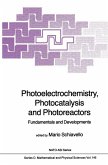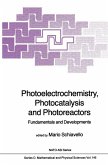In addition to domestic animals the earliest records of mankind indicate that slavery, until the use of coal became widespread, has always been a significant aspect, or part, of nearly every society. Consider for example ancient Attica (Greece), in which 115,000 out of a total population of 315,000 were slaves [1]. For the lucky rulers slaves represented power, Joule/second or Watt. On a steady state basis a healthy adult generates about 100 Watts, or 100 J/s, while a highly conditioned endurance athlete can generate about 300 W for perhaps an hour. Today we obtain our energy from fossil fuels, that magical brew of latent-heat chemistry that allows us to run the world without having to rely on people or domestic animal power. We owe much if not all of modern civilization to fossil fuels, no more than stored solar energy, which provide the 40-plus Terawatts that annually powers the ? 7,000,000,000 people on this planet, with our fossil fuel burn rate growing to accommodate the annual increase of some additional 100,000,000 or so souls. The foundation of modern society is a pile (lake) of priceless, irreplaceable fossil fuel that, by any measure of the energy you get and what you pay, is all intents free, and being virtually free we have and continue to burn our way through it as fast as we possibly can. It is the tragedy of the (fossil fuel) commons.
From the reviews: "The 'Holy Grail' of artificial photosynthesis, particularly for hydrogen production, is often traced ... . This book deals with this field, largely from the point-of-view of solid-state synthesis and engineering. ... The book is useful for getting brief descriptions of the huge literature on oxide semiconductors prepared in different ways and their behavior. ... if oxide materials, and especially TiO2 nanostructures, are of major interest, this book will be useful in traversing the massive literature in this field." (Allen J. Bard, Journal of the American Chemical Society, Vol. 130 (26), 2008) "Grimes and colleagues (all, Pennsylvania State Univ.) have done a marvelous, meticulous job of collecting the latest developments in hydrogen evolution by nontraditional means to prepare the reader to understand and appreciate the importance of semiconductor photoelectrolysis in the energy future. ... The logically developed chapters are copiously referenced (more than 1,000 references listed) and liberally annotated with graphs, tables, and other illustrative diagrams. Summing Up: Highly recommended. Upper-division undergraduate through professional collections." (S. R. Walk, CHOICE, Vol. 45 (11), July, 2008)








